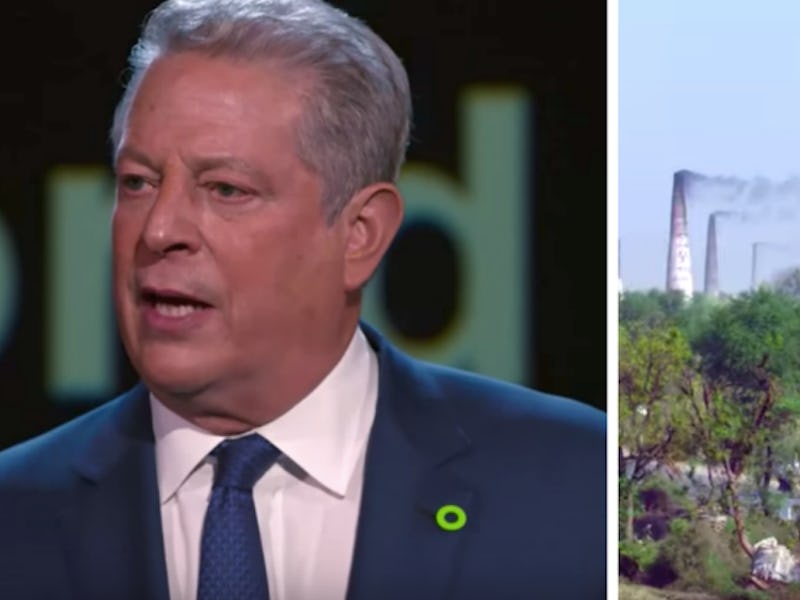There’s a right way and a wrong way to convince people that climate change is real, according to a new paper in the journal Environmental Communication. And showing climate change skeptics the cold, hard data behind scientific consensus, the British scientists behind the paper argue, is not it. What’s more important, they write, is to give them a reason to care — and to use science to answer their questions rather than point out their errors.
That’s a lesson that Al Gore touches on in the upcoming An Inconvenient Sequel: Truth to Power. The “most criticized scene” in his first film, An Inconvenient Truth, “was a simulation showing that the combination of sea level rise and and storm surge would flood the 9/11 memorials,” Gore explains in the new documentary. But in the An Inconvenient Sequel, Gore didn’t have to rely on predictive modeling: Hurricane Sandy did cause the memorials to flood.
That’s likely why the British scientists would agree that An Inconvenient Sequel has the potential to change more minds than its predecessor. In the new film, Gore can actually demonstrate how climate change is changing Earth rather than just theorize that it will. At the end of the day, whether you’re a climate change denier or believer, watching a town get ravaged by floods is a lot more convincing than data sets.
The scientists behind the new article would agree that Gore’s approach is the right one. They make their argument by highlighting an often-cited data point known as the “97 percent consensus” — the percentage of actively publishing climate scientists who agree that climate-warming trends over the past century are “extremely likely” because of human activity. This is also the number that’s frequently picked apart by conspiracy theorists, who argue that the lack of complete consensus is evidence that the crisis isn’t real.
“The ‘97 percent consensus’ has become a popular slogan for climate campaigners, but the strategy is self-defeating,” said University of Nottingham co-author Reiner Grundman, Ph.D., in a statement. “There is a danger of overreach in that numbers like the 97 percent consensus are implicitly extended to all areas of climate science, and used to close down debate over complex topics like extreme weather events. This approach also makes the implausible assumption that publics will follow the correct policy path once given the relevant scientific information, and that acceptance of scientific consensus is needed to support specific solutions.”
This number, Grundman and his team argues, has distracted people form “more urgent matters” like policy framing, public engagement, and general knowledge about climate change. Scientists may understand that 97 percent is an impressive consensus for such a complex, multifaceted topic but the general public does not. Importantly, the researchers note, this number also “does not tell us anything about what to do about climate change.”
“Fundamentally,” the write, “no set of calculations about epistemic consensus can help to tie people together in the absence of other social connection.”
What does create a social connection, however, is telling the stories of people affected by climate change and those who are actively working to stop it. In mid-July, Buzzfeed reporter Katie Hasty convincingly argued that documentary films were an effective means to convince even Creationists of climate change. And while An Inconvenient Truth helped push the conversation around climate change into the mainstream in 2006, “gentler” documentaries — ones that that are based more on human stories and environmental imagery than PowerPoint slides full of stats — have arguably done more to switch climate change deniers over to the other side.
It’s a shame that simply using facts to present a case brings in the nods of the choir but doesn’t change the minds of people already predisposed to disbelieve. But that’s also why An Inconvenient Sequel may well be the climate change documentary we need. Yes, it puts the dangers of climate change front and center, but it also drives home how people can effectively change the situation.
“This movie gives me an extra burst of hope,” Gore said at its Sundance screening, “because I think it really effectively tells the story of how much hope is out there for transforming our energy system to become much more efficient.”
